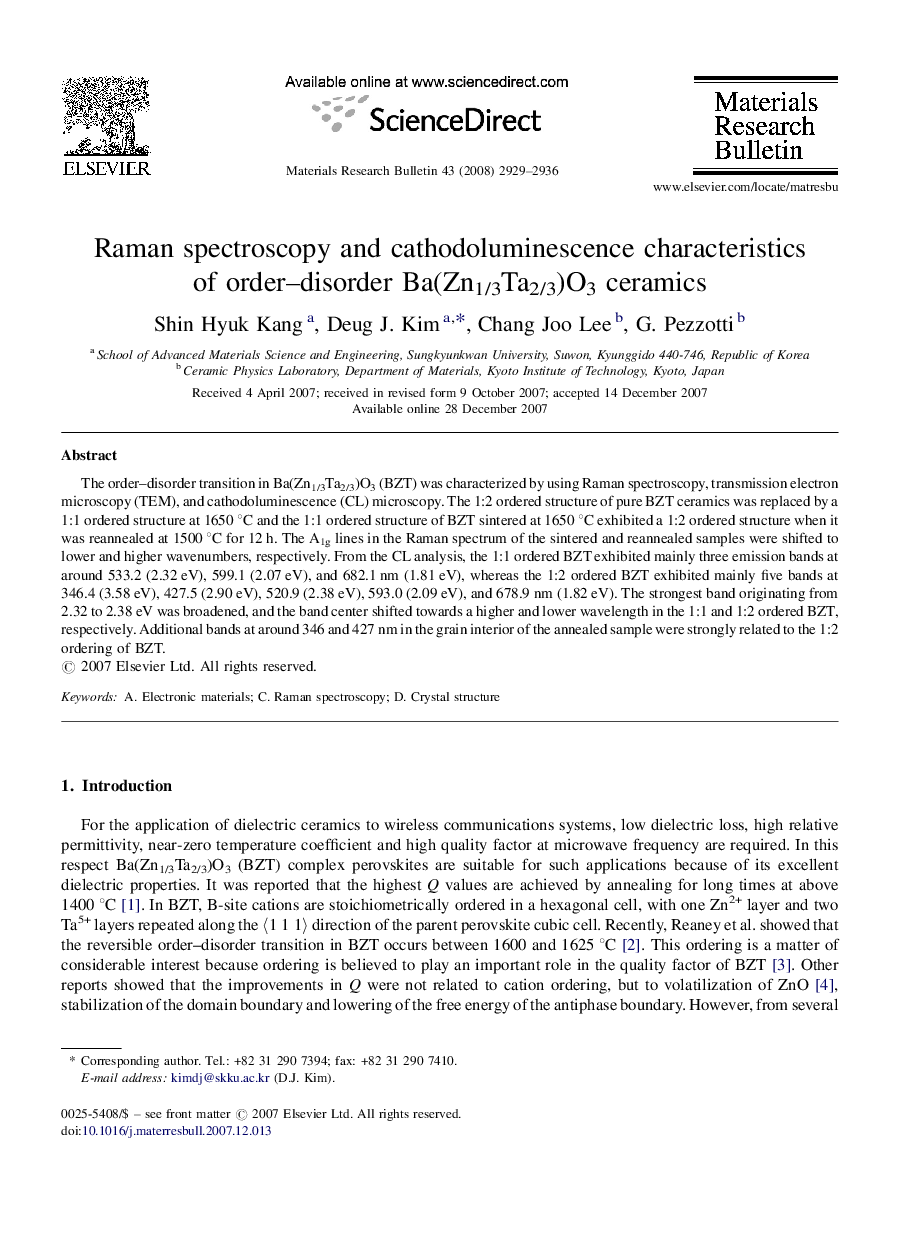| Article ID | Journal | Published Year | Pages | File Type |
|---|---|---|---|---|
| 1492085 | Materials Research Bulletin | 2008 | 8 Pages |
The order–disorder transition in Ba(Zn1/3Ta2/3)O3 (BZT) was characterized by using Raman spectroscopy, transmission electron microscopy (TEM), and cathodoluminescence (CL) microscopy. The 1:2 ordered structure of pure BZT ceramics was replaced by a 1:1 ordered structure at 1650 °C and the 1:1 ordered structure of BZT sintered at 1650 °C exhibited a 1:2 ordered structure when it was reannealed at 1500 °C for 12 h. The A1g lines in the Raman spectrum of the sintered and reannealed samples were shifted to lower and higher wavenumbers, respectively. From the CL analysis, the 1:1 ordered BZT exhibited mainly three emission bands at around 533.2 (2.32 eV), 599.1 (2.07 eV), and 682.1 nm (1.81 eV), whereas the 1:2 ordered BZT exhibited mainly five bands at 346.4 (3.58 eV), 427.5 (2.90 eV), 520.9 (2.38 eV), 593.0 (2.09 eV), and 678.9 nm (1.82 eV). The strongest band originating from 2.32 to 2.38 eV was broadened, and the band center shifted towards a higher and lower wavelength in the 1:1 and 1:2 ordered BZT, respectively. Additional bands at around 346 and 427 nm in the grain interior of the annealed sample were strongly related to the 1:2 ordering of BZT.
